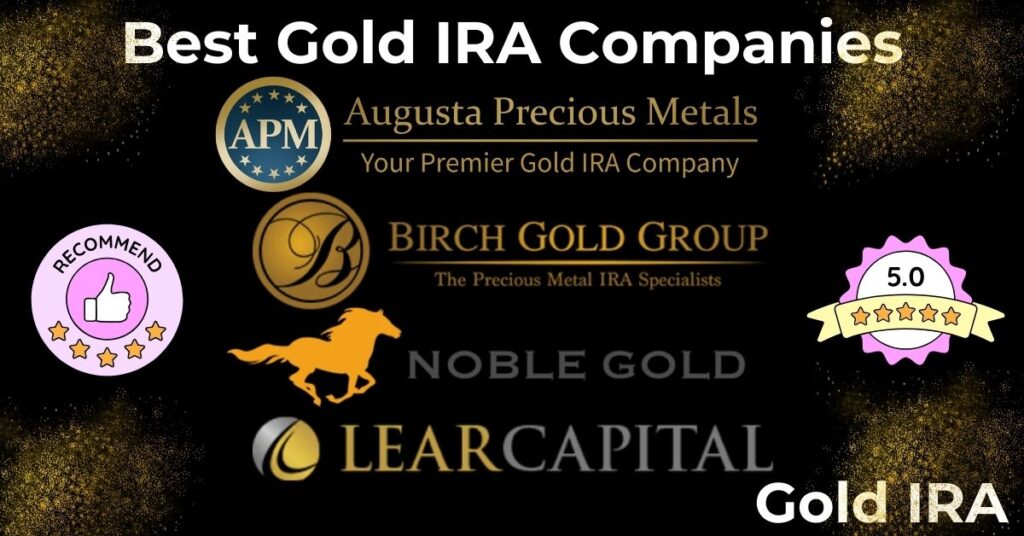 Opening a Gold IRA account is a solid way to mix up your retirement savings with something a bit more tangible and steady. With a Gold IRA, your nest egg won’t just ride on stocks or bonds; you’ll actually own physical gold (and sometimes other precious metals) as a core part of your IRA. This guide covers the process step by step, so you can feel confident about getting started—even if you’re brand new to this style of investing.
Opening a Gold IRA account is a solid way to mix up your retirement savings with something a bit more tangible and steady. With a Gold IRA, your nest egg won’t just ride on stocks or bonds; you’ll actually own physical gold (and sometimes other precious metals) as a core part of your IRA. This guide covers the process step by step, so you can feel confident about getting started—even if you’re brand new to this style of investing.
If the details and options seem overwhelming—like rolling over funds, or finding a reputable provider—you’re not alone. But once you know the basics, the process becomes much less intimidating. Here’s exactly how to open a Gold IRA account, what to look out for, plus extra tips for an easy start.
Step 1: What Is a Gold IRA?
A Gold IRA is similar to a regular IRA, but it lets you invest in actual gold coins or bars instead of just paper assets. The IRS permits certain approved metals (mainly gold, but also silver, platinum, and palladium) as part of your retirement funds, as long as you stick to some strict rules.
Quick Gold IRA Facts:
- It’s a selfdirected IRA, so you get more say in what you invest in.
- The gold must meet strict purity standards (typically .995 or higher for gold bars).
- All metals are required to be held by an IRSapproved custodian; you can’t keep them at home.
Adding physical assets to your retirement can help balance your savings, especially if the market gets rocky. Still, there are specific rules and tax considerations you need to know about to keep your account in good standing.
Step 2: Does a Gold IRA Fit Your Retirement Goals?
Before you get into the process, it pays to make sure a Gold IRA truly fits your longterm plans. Precious metals don’t usually skyrocket in value overnight, but they can give a boost of stability when markets turn bumpy.
Questions to Mull Over:
- Do you already have retirement investments like a 401(k) or Roth IRA?
- Are you comfortable holding part of your savings in physical assets?
- Do you understand the risks, since gold prices can still rise and fall?
If your plan calls for steady, longrun growth with some variety, a Gold IRA might be worth adding to the mix.
Step 3: Research Gold IRA Providers and Custodians
You can’t just walk into any bank and open a Gold IRA. The IRS requires that these accounts are set up and managed by a qualified custodian. There are plenty of companies out there to choose from, and picking the right one helps you steer clear of headaches.
What to Watch For:
- Proper accreditation and experience handling selfdirected IRAs
- No sketchy complaints or signs of scams (give reviews and Better Business Bureau reports a onceover)
- Transparent fee structure—know what you’ll pay for setup, storage, and yearly maintenance
- Smooth and simple process for buying IRSapproved metals
Most Gold IRA companies will handle your paperwork and guide you through the setup. Some well-regarded custodians include Equity Trust, GoldStar Trust, and Entrust Group, among others. Make sure your chosen provider has up-to-date approval to handle selfdirected IRAs with precious metals.
Step 4: Choose Your IRA Type and Fund It
You can open your Gold IRA as a traditional IRA, Roth IRA, or SEP IRA—just as you would with regular retirement accounts. The usual way to fund your Gold IRA is either by rolling over money from an existing retirement account or by making direct contributions (both have specific rules and yearly limits).
Ways to Fund Your Account:
- Rollovers: Move funds from an old 401(k) or an IRA into your new Gold IRA. Contact your current provider for the exact rollover process (and timing requirements).
- Transfers: Shift money between two IRA accounts, usually by filling out a transfer form with your new provider.
- Direct Contributions: Deposit new funds, remembering the IRS’s annual contribution cap ($6,500 as of 2024, or $7,500 if you’re 50+).
Good providers will smooth the way and walk you through the paperwork, so you don’t get hung up on paperwork or IRS regulations.
Step 5: Pick Your Gold (and Other Metals)
With your account funded, it’s time to select the metals you want. The IRS only allows certain gold and metals—so you can’t use just any gold bar or collectible coin.
IRAEligible Metals:
- Gold: Coins (like American Gold Eagle and Canadian Maple Leaf) and bars with .995 purity or higher.
- Silver: Coins (American Silver Eagle, Canadian Maple Leaf) and bars with .999 purity or above.
- Platinum and Palladium: Some coins and bars also qualify.
Your custodian or dealer can list out which products are eligible. To be sure you’re picking the right ones, check the IRS guidelines online.
Step 6: Set Up Secure Storage
IRS rules insist your precious metals must be stored at an approved depository—not in your house or a typical bank safe deposit box. Luckily, your IRA company takes care of setting this up. After purchase, your metals are shipped right to the vault partner for safe keeping. The storage company provides paperwork to prove everything is in your name and part of your IRA.
How Storage Works:
- Segregated Storage: Your metals are stored separately from everyone else’s.
- Nonsegregated Storage: Your metals are stored with others, but you still have a clear claim to your portion. Segregated storage can be pricier but usually comes with extra peace of mind.
Always check the depository’s insurance coverage and their audit track record. Trusted Gold IRA providers often use depositories like Delaware Depository or Brink’s Global Services.
Step 7: Keep Records and Stay Within The Rules
After everything’s set up, stay sharp about account management. There are several things Gold IRA owners need to keep in mind:
- Follow the yearly contribution limits as outlined by the IRS.
- Be ready for required minimum distributions (RMDs) once you hit age 73 (for traditional IRAs).
- Metals must stay in approved storage until you do a qualified distribution—otherwise taxes and penalties might kick in.
- Keep your custodian updated about your contact and beneficiary details.
If you stick to these guidelines, your Gold IRA will stay in good shape and help support your retirement goals.
Frequently Asked Gold IRA Questions
Can I actually take the gold home?
No, not while it’s part of your IRA. Once you reach retirement age or opt for a qualified withdrawal, you can get your gold as a distribution—just keep in mind you’ll pay taxes on it, just like a standard IRA payout.
Are taxes or penalties involved?
If you follow the rules for rollovers, transfers, and withdrawals, there aren’t any taxes right away. Traditional Gold IRAs let you defer taxes like any regular IRA; Roth Gold IRAs allow for taxfree withdrawals later if you qualify.
What’s the average cost to keep a Gold IRA?
You’ll generally pay fees for account setup, annual maintenance, and storage. Ask your custodian to give the details in writing so you know exactly what to expect.
Getting Started with a Gold IRA
If you’re ready to move forward, here’s a quick checklist to kick things off:
- Determine if a Gold IRA fits your longterm plan and check out qualified providers.
- Compare at least a few custodians for fees and service—solid reviews matter too.
- Open your account, fund it by transfer, rollover, or direct contribution, and choose your metals.
- Double-check all details, ask questions as needed, and file your paperwork for tax purposes.
A Gold IRA isn’t ideal for everyone, but if you want to spread out your portfolio risk and have some real, physical assets in your retirement, it’s a solid option. Make informed choices, stick with reputable companies, and you’ll gain extra peace of mind as you move closer to your financial goals.

